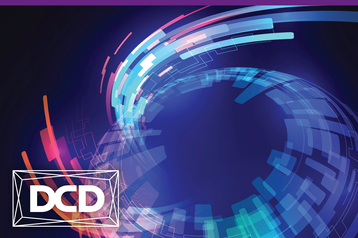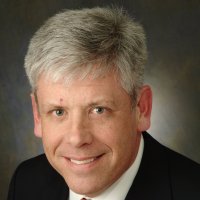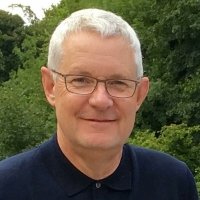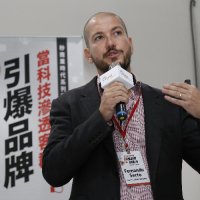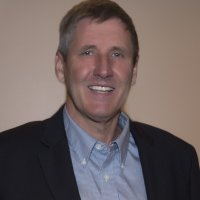Everyone agrees that the edge is where it’s going to happen. All the major shifts, from smart cities, to autonomous vehicles to the Internet of Everything, depend on fast networks tied closely to real-time sensors, intelligent devices and greedy end users. This is forcing us to change how we build our information networks.
Planning for what is defined can be complex, planning for what is not defined or half-defined, much more so. Therefore a half-day seminar – Edge in an era of Digital Transformation - will held on the morning of Thursday August 23 before the start of DCD>Australia at the International Convention Centre in Sydney, to share practical insights, experiences, case studies and analyses of decision-making as well as recommendations as to best practice. DCD spoke to four of the experts who will contribute their experience and insight to the Focus Seminar which will include four keynote presentations, two discussion panels, round tables, and networking.The roll-out of edge has an inevitability to it and a majority of Australian companies say that it is already impacting their IT delivery architectures, according to DCD’s APAC Attitudes research, January 2018. Yet strategies preparing for edge are more limited and actual edge compute instances rarer still. This suggests a degree of shadow boxing, that the edge is already being built while we are still defining it, and planning how to use it.
Dave Sterlace, ABB
Global head of technologies for data center industry sector, ABB
- Edge Seminar Panel: What are the unique design considerations of the Edge data center in terms of its usage requirements and location?
As global head of technologies for the data center industry sector, Dave is responsible for matching the myriad of products and systems that ABB designs and manufactures to the needs of particular industry sectors. Increasingly, his conversations with clients have dealt with digitalization and, among other initiatives, ABB has partnered with HPE and Rittal to deliver Industry IoT to bring automation and integrated communications to the factory floor.
His experience of IoT is based also on ABB’s own production and monitoring processes. An internal review suggests that there are around 70 million ABB devices around the world and these are being digitalised under the same banner and this initiative gives ABB a very good first-hand view of the Edge. In this process and from a working definition of Edge as “where your stuff meets the Internet”, Dave sees cybersecurity as a key challenge, along with the new urgency of being able to make infrastructure and power delivery scalable to demand.
Dave’s role allows him also to draw comparisons between different industries in their progress towards Edge based around “what is vital to your industry”. He sees also that power generation will become more disaggregated and localised and cites the example of Google buying into a utility which will allow them he hypothesize, to connect their local datacentre at utility company voltages using a purpose-built substation.
In terms of his contribution to the DCD>Australia Edge seminar, Dave is aware of the considerable data center activity in Australia and he looks forward to seeing how the sector in Australia has evolved in terms of optimisation. He points out the experience that the Australia resources sector already has in remote compute – “we can take learnings from oil and gas and how they would deploy a DC in a box. It is not scary as it has already been done”.
Robert Linsdell, Vertiv
Managing director Australia & New Zealand, Vertiv
- Keynote Speaker: How does Edge computing transform enterprise data center strategy?
A key part of Robert’s responsibilities, and one that he admits to enjoying immensely, is to interpret and guide Vertiv’s strategy and vision across Australia and New Zealand. While Robert considers Australia to “punch above its weight” in terms of both the size and innovation of its IT sector, he sees Edge as presenting a range of new challenges and opportunities: “It is a huge growth area at the moment, very much in its early days”. He identifies a future path based increasingly on communication and interaction between devices with limited, if any human involvement, and this in turn will impact on the requirements and design of the infrastructure to support the transformations of which Edge is a key part.
According to Robert, the principles behind Edge have been around a long time and Vertiv has taken the opportunity to think carefully about what it is that businesses require to deploy it and have developed solutions sets accordingly. One size of Edge does not fit all, as Robert states: “each vertical has its own dynamic – we have developed four Edge archetypes that help describe the Edge and make it easier when companies start thinking about it”. Robert identifies security, connectivity and sufficient data infrastructure capacity as critical requirements in deploying Edge and sees also a challenge in the need to establish connectivity protocols so devices can interact with each other – “it is a little Wild West out there!
His presentation will build on the insights gained from his own and Vertiv’s research and experience of Edge computing and will look also at the need to think about the IT infrastructure that enables companies to support the customer technologies that support the customer.
Robert considers Edge a critical part of any future IT strategy, and he believes that the current state of preparation for it may be limited: “There is maybe a single figure percentage of people who understand what they are doing with Edge and I read that only 40% consider Edge an important part of their future strategy. I think everybody needs it to be part of their agenda.”
Fernando Serto, Akamai
Head of security technology and strategy, Asia Pacific, Akamai Technologies
- Seminar Panel: How will it be possible to maintain security and reduce risk at the Edge?
- Round Table Lead: What are the implications for security with an explosion in data center sites at the edge?
Fernando Serto is in charge of strategy for all the Akamai Technology portfolio of security products across the Asia Pacific. On the basis of the time he has spent with customers, analysts and working in markets across the region, he detects a general change in the attitudes towards security and the willingness to invest in it:
“It has always been important but up until 2 years ago there was not a lot of focus among organisations and not a lot of investment. No one would openly say they had had a data breach!”
Legislation in Australia now requiring the disclosure of breaches, the launch of GDPR in the EU, and coverage of data breaches in mass media have created a new sense of urgency about security and even some panic, that “everyone is a target”.
How does Edge change the threat landscape for Australian businesses? According to Fernando, where the applications or the transactions are being executed and the fact that applications are being accessed from a lot of different places a lot of the time doesn’t really change the security requirements greatly. Neither does it really matter where it is hosted, whether in a physical data center or via IaaS or PaaS or edge computing, or fog computing. However, it does create the need for the correct security principles to be in place:
“What is critical is the fact that applications are already being accessed from outside, from anywhere and from any device and this is where organisations should be focusing”.
Therefore, Fernando will focus on the overall security perspective at the Edge seminar and during the main conference, on how to secure internal applications, and on the Akamai approach of a “zero trust methodology” relevant to the infrastructure changes currently underway in the industry:
“People are experimenting with cloud environments but finding that IaaS does not save you any money, so they went back to physical infrastructure – the focus needs to be on improving user experience not just on cutting costs and security will be a key part of that”.
Jim Fletcher
Strategy partner, office of the CTO, Momenta Partners
- Lightning Keynote: How is IoT data capture and processing driving new edge-to-core data center network architectures?
- Panel: What are the unique design considerations of the Edge data center in terms of its usage requirements and location?
Jim Fletcher offers unmatched experience and insight into the use of IoT and the analysis of data to enable business opportunity. He sees the future choice in relation to accelerating IOT technological trends as stark: “Almost every company is going to be impacted by IoT in some way; either in a positive way where they transform and evolve, or in a negative way where they don’t become part of the evolution”.
Jim sees ‘Edge’ as a key part of a forward strategy but cautions against presenting it as something totally new, citing smart phones, guidance systems in cars, and home gateways as existing examples of Edge computing devices. He prefers to see current initiatives as a process of modernization of Edge through which the connection between the Edge and the core is refined. This process may involve the formation of hives - aggregations of multiple Edge nodes - bringing together multiple nodes will increase the value of the data generated. He points out also that the idea of a single Edge is flawed – there will be many edges that a core will deal with.
So, what does the modernisation of edge mean for digital infrastructure? He sees the challenge as happening when Edge solutions become more intelligent and connected to the cloud or to the data center where the horsepower will be used to analyse the aggregated data in order that the learnings from that can be shared. As this process becomes more evolved so Jim sees that the cloud will be a complement to the Edge rather than vice-versa, that there will be a lot more peer-to-peer and distributed computing with the dominant work done at the edge in near real time. Yet the models and rules of Edge computing will be derived and refined in the cloud.
Jim’s advice to businesses looking into the Edge is foremost to ask the right questions. What is the business problem I am trying to solve? How can I apply Edge? What is my key use case? These are questions that Jim will look at in his keynote and panel at the Edge seminar and this leads him further to a valuable insight that he will cover in the main conference where he will speak about the necessity of using analytics properly:
“One of my complaints is that people seem more enamored with collecting and storing the data than they are with using it to get value from it. The real value of the data is based on analysis and insight, and actions generated from the data”.

